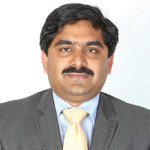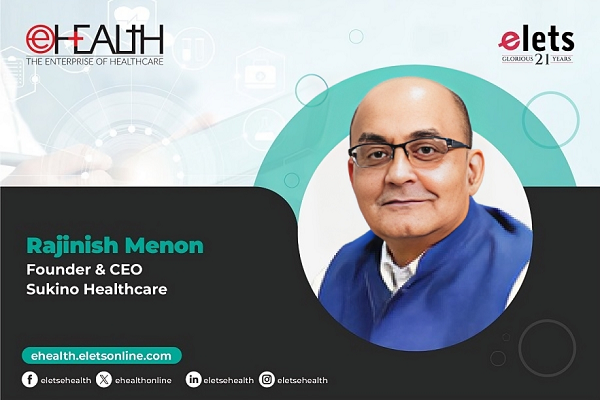
Indian healthcare infrastructure is in a state of paradox. While certain urban centres have five-star deluxe facility hospitals with a state-of-the art medical technologies; there are areas which dont even have the basic access to primary healthcare. Although various state governments are taking initiatives to improve the health infrastructure, various health experts share with Prathiba Raju of Elets News Network (ENN) on how a major revamp is necessary
 Healthcare in India exuberates a wide disparity among all levels, while at one end it is heading towards advancements in innovative healthcare, at the other end, it lacks basic infrastructure in the medical facilities. To bridge this gap, a major revamping of the healthcare infrastructure is needed which includes upgrading the Primary Healthcare Centres (PHCs), preventive health measures, pre-natal care, vaccinations and counselling on the importance of hygienic practices, and sanitation at all urban, rural centres and secondary care hospitals in taluka and district hospital levels. There has to be increased participation of private sector for infrastructure and capacity development.
Healthcare in India exuberates a wide disparity among all levels, while at one end it is heading towards advancements in innovative healthcare, at the other end, it lacks basic infrastructure in the medical facilities. To bridge this gap, a major revamping of the healthcare infrastructure is needed which includes upgrading the Primary Healthcare Centres (PHCs), preventive health measures, pre-natal care, vaccinations and counselling on the importance of hygienic practices, and sanitation at all urban, rural centres and secondary care hospitals in taluka and district hospital levels. There has to be increased participation of private sector for infrastructure and capacity development.

Drawing the concern of the healthcare infrastructure, Pranab Mukherjee, President of India, recently informed in a conference, A developing country like India needs a universally accessible, affordable and effective healthcare which can be acquired only by having a robust healthcare infrastructure, trained and motivated personnel, and better access to medicines and equipment.
Considering that Indias public expenditure on health is meagre, Mukherjee said that a significantrise in health expenditure is urgently required.
Govt and Private Sector Synergy

The healthcare infrastructure is in a juncture where the synergy between the state governments and private sector is crucial. As the Government of India has informed that they would increase healthcare expenditure to 2.5 per cent of the Gross Domestic Product (GDP), various state governments are trying to improve the health infrastructure. This alone cannot meet the infrastructure capacity, the private players also need to fit in the shortages existing in the current healthcare system.
Government of India has informed that they would increase healthcare expenditure to 2.5 per cent of the Gross Domestic Product (GDP), various state governments are trying to improve the health infrastructure. This alone cannot meet the infrastructure capacity, the private players also need to fit in the shortages existing in the current healthcare system.
Improved healthcare infrastructure is definitely the need of an emerging economy like India and private players have been major contributors. Though the various state governments have come up with the programmes, private players have facilitated the government to reach to the grass root levels, says Amol Naikawadi, Joint Managing Director, Indus Health Plus (P) Ltd, Pune.
 Pranab Mukherjee, President of India:A developing country like India needs a universally accessible, affordable and effective healthcare which can be acquired only by having a robust healthcare infrastructure, trained and motivated personnel, and better access to medicines and equipment. Pranab Mukherjee, President of India:A developing country like India needs a universally accessible, affordable and effective healthcare which can be acquired only by having a robust healthcare infrastructure, trained and motivated personnel, and better access to medicines and equipment. |
Many organised private infrastructure sector are making inroads in tier II and tier III cities. They give opportunity to not only increase the penetration of quality health services but also be the growth driver in these regions, said Naikawadi.
Informing the government should come up with investment-friendly policies in the health sector, Dr Sunil K Khetarpal, Chief Operating Officer, Shalby Hospital, Indore said, Easy loans from banks to set up private hospitals, diagnostic centres and pharmaceuticals can change the face of healthcare infrastructure in India. In the developed market, health insurance companies can compete with each other. They can also negotiate with hospitals for the quality of services offered to the patients. Eventually, a better competitive market will reduce costs and result in better services.
Despite making rapid strides in the last decade in various aspects of healthcare, the country still faces basic healthcare challenge like scarcity of beds, proper doctor patient ratio, lack of essential drugs, alignment of hospitals with physicians more closely and a well integrated hospital information system and data management is yet a miss.
As a country we face an acute shortage of over 64 lakh skilled human resource in the health sector, the physician density of India per10,000 population stands poorly at 6.5. Indias nursing and midwifery density of 10 per 10,000 of population is not even half the global average of 28.1. The worst indicator is the density hospital beds per 10,000 population, which stands at nine against a global average of 30.
Our country faces acute shortage of over 64 lakh skilled human resource in the health sector, the physician density of India per 10,000 populations stands poorly at 6.5. India’s nursing and midwifery density of 10 per 10,000 of population is not even half the global average of 28.1. The worst indicator is the density hospital beds per 10,000 populations, which stands at nine against a global average of 30
In the WHO ranking of the worlds health systems, India stands ata low 112th position, whereas its neighboring countries Sri Lanka stand at 76th position and Bangladesh 88th position.
Indias poor health infrastructure brings to light the countrys struggle of providing sustainable healthcare to its populace. While on one hand, we have advent of several major hospital chains, on the other hand, the insufficiency in the total bed capacity and lack of human resource are major causes of concern, said Nilaya Varma, Partner and Head of Government and Healthcare, Infrastructure and Government Service (IGS), KPMG in India.
 Nilaya Varma, Partner and Head of Government and Healthcare , Infrastructure and Government Service (IGS), KPMG in India: India’s poor health infrastructure brings to light the country’s struggle of providing sustainable access to healthcare to its populace. While on one hand, we have advent of several major hospital chains on the other hand, the insufficiency in the total bed capacity, lack of human resource are major causes of concern. Nilaya Varma, Partner and Head of Government and Healthcare , Infrastructure and Government Service (IGS), KPMG in India: India’s poor health infrastructure brings to light the country’s struggle of providing sustainable access to healthcare to its populace. While on one hand, we have advent of several major hospital chains on the other hand, the insufficiency in the total bed capacity, lack of human resource are major causes of concern. |
Varma also emphasised that the health gaps need to be addressed for an effective foresight. Designinga competent policy framework, pertinent regulation and a push from the top are required to realise national health goals to build a robust healthcare infrastructure in the country.
As per a study conducted by Price water house Coopers (PwC) report, The Future of India: The Winning Leap, in order to meet the desired outcomes in terms of hard and soft infrastructure capability, the healthcare delivery system will need to add 3.6 million beds, three million doctors and six million nurses over the next 20 years.
In order to meet the deficit of bed, doctor and patient ratio an investment of around US$ 245 billion is needed. Such an investment would not only put fiscal pressure, but would be difficult to implement considering the nature and scale of new additions. For instance, over the last decade roughly 100,000 hospital beds have been added annually. If India continues to maintain this rate, it will fall short of the Winning Leap target by 1.6 million beds by 2034. The country needs solutions that can help maximize reach and efficacy and are cost-effective by a quantum margin, the report stated.
As per analysts, a stronger regulatory framework will help to enhance efficiency and fill the necessary gaps; the healthcare market is expected to grow at a steady pace during the next decade. The industry should concentrate on non-metro urban market, government sponsored health insurance programs and implementing IT in the healthcare domain.
 Amol Naikawadi, Joint Managing Director, Indus Health Plus (P) Ltd, Pune: Many organised private infrastructure sector are making inroads in tier II and tier III cities. They give opportunity to not only increase the penetration of quality health services but also be the growth driver in these regions. Amol Naikawadi, Joint Managing Director, Indus Health Plus (P) Ltd, Pune: Many organised private infrastructure sector are making inroads in tier II and tier III cities. They give opportunity to not only increase the penetration of quality health services but also be the growth driver in these regions. |
Health Insurance- a key factor
Good quality healthcare should be a right, not a privilege. A proper health insurance would be a game changer, as it would help the common man avail medical treatment at good facilities. Health insurance would be an aid for nearly 40 million people who are burdened by out of pocket expenses.
Analysts feel the buzz on the Insurance Bill and universal health cover has helped raise awareness on health insurance in India. In terms of the gross written premium, the industry has crossed Rs 20,000-crore mark in 2014 and is expected to grow impressively in the coming years.
High out-of-pocket expense is an indication of low health insurance coverage in India. Less than 15 per cent of population has some form of health insurance coverage. There is immense potential for the health insurance segment and there is an urgent need to ramp up the health insurance coverage in the country, Dr Khetarpal said.
Four years ago, amongst the BRICS nations, Russias out-of pocket expenses stood highest at 87.9 per cent, closely followed by India (86%), China (78.8%), Brazil (57.8%), and South Africa (13.8%). On the other hand, these expenses in the developed economies of US and UK were comfortably poised at 20.9 percent and 53.1 per cent respectively.
 Dr Sunil K Khetarpal, Chief Operating Officer, Shalby Hospital, Indore: Easy loans from banks to set up private hospitals, diagnostic centres and pharmaceuticals can change the face of healthcare infrastructure in India. In the developed market, health insurance companies can compete with each other. A better competitive market will reduce costs and result in better services. Dr Sunil K Khetarpal, Chief Operating Officer, Shalby Hospital, Indore: Easy loans from banks to set up private hospitals, diagnostic centres and pharmaceuticals can change the face of healthcare infrastructure in India. In the developed market, health insurance companies can compete with each other. A better competitive market will reduce costs and result in better services. |
Lack of awareness and tendency to postpone the decision to buy health insurance are the main reasons for low health insurance coverage in India.
 The health insurance has become one of the most promising segments today and is expected to grow significantly in the next few years. There are innovative offerings and schemes from the health insurance companies to attract the insured. As spending on healthcare in India is expected to grow double in a couple of years, health insurance segment is likely to become the biggest contributor in the non-life segment, said Puneet Gupta, a Star Health Insurance consultant.
The health insurance has become one of the most promising segments today and is expected to grow significantly in the next few years. There are innovative offerings and schemes from the health insurance companies to attract the insured. As spending on healthcare in India is expected to grow double in a couple of years, health insurance segment is likely to become the biggest contributor in the non-life segment, said Puneet Gupta, a Star Health Insurance consultant.
The health insurance industry is dominated by four public sector entities “National Insurance, New India Insurance, Oriental Insurance, and United India Insurance, which have 60 per cent market share. The rest of the market shared by 17 private sector players, of which four are standalone health insurance players – Star Health, Apollo Munich, Max Bupa and Religare Health. Among the private players, ICICI Lombard continuous to be the largest private sector non-life insurance company, with a market share of around 10 per cent.
Apart from insurance, the advancement of IT in healthcare has given a face lift to the healthcare sector.
IT- the game changer
The use of Information Technology (IT) in healthcare is on the rise and it is projected to grow by leaps and bounds in the coming years. The IT in healthcare is empowering health domain with more affordable, accurate and accessible healthcare than ever before. And its just the beginning.
From struggling to get decent broadband bandwidth to set up heavy resource driven server infrastructures, India has come a long way in the past two decades. With the advent of cloud and mobility, and the growing demand of ubiquitous access, IT has started playing a strong role of an enabler in the medical infrastructure today informed Abhijit Gupta, Founder and CEO, Praxify Technologies.
Several health experts feel that the new mobile and cloud-enabled applications imply a lot of backend infrastructure readiness from IT – right from secured access, wireless connectivity, proper bandwidth utilization, to providing security to devices and data.
PwC report states that clearly defined policy related to incentives, tax rebates, institutional loan interest waiver scheme, land acquisition, SEZ status approval and removal of red tape-ism in attracting big private service providers to set up large super specialty and multi-specialty facilities as well as medi-cities is needed to achieve robust healthcare infrastructure
Lot of experimentation is going on in the various modules available with various service providers. The hospitals are customizing the modules at their end as per their needs. The challenge lies in bringing along the medical fraternity i.e. the clinicians and nursing personnel, who are not exposed to IT and find it difficult to acclimatize their working from real paper to virtual tablet, said Dr H S Chhabra, Chief of Spine Services and Medical Director, Indian Spinal Injuries Centre, Vasant Kunj.
 Abhijit Gupta, Founder and CEO, Praxify Technologies: From struggling to get decent broadband bandwidth to set up heavy resource driven server infrastructures, India has come a long way in IT initiatives. With the advent of cloud and mobility, and the growing demand of ubiquitous access, IT has started playing a strong role of an enabler in the medical infrastructure today. Abhijit Gupta, Founder and CEO, Praxify Technologies: From struggling to get decent broadband bandwidth to set up heavy resource driven server infrastructures, India has come a long way in IT initiatives. With the advent of cloud and mobility, and the growing demand of ubiquitous access, IT has started playing a strong role of an enabler in the medical infrastructure today. |
Dr Ashendu Pandey, CEO, CK Birla Hospitals, said, CK Birla Hospitals have invested substantially in the implementation and will keep on investing in technology which will help in redefining healthcare practices in eastern India.
With technology being the new buzz word in healthcare industry, doctors too take help of apps and smart phones. For example, the mHealth apps and software help the doctors to keep track of the patients.
apps and software help the doctors to keep track of the patients.
Mobile-enabled collaboration platforms can ensure real time patient and staff engagement before, during and after hospitalization.
In the WHO ranking of the worlds health systems, India falls lowly on the 112th position, whereas its neighbouring countries Sri Lanka stand in 76th position and Bangladesh in 88th position
With exponentially increased use of IT and advances in mobile technology, healthcare delivery is all set to go beyond the physical confines of a hospital and empower patients to access healthcare anywhere, anytime, said Chandrashekhar B C, Head of Product Management, CSC Asia, Middle East and Africa.
He also added that IT should also be taken to tier II and tier III cities and to the grassroots levels via video conferencing, spreading useful medical apps in villagesas smart phones are widespread.
 Dr H S Chhabra, Chief of Spine Services and Medical Director, Indian Spinal Injuries Centre, Vasant Kunj: Lot of experimentation is going on in the various modules available with various service providers. The hospitals are customising the modules at their end as per their needs. The challenge lies in bringing along the medical fraternity i.e. the clinicians and nursing personnel, who are not exposed to IT and find it difficult to acclimatise their working from real paper to virtual tablet. Dr H S Chhabra, Chief of Spine Services and Medical Director, Indian Spinal Injuries Centre, Vasant Kunj: Lot of experimentation is going on in the various modules available with various service providers. The hospitals are customising the modules at their end as per their needs. The challenge lies in bringing along the medical fraternity i.e. the clinicians and nursing personnel, who are not exposed to IT and find it difficult to acclimatise their working from real paper to virtual tablet. |
Need for a push
The ever-growing population and increasing disease burden have made our country to work on fast paced health reforms. The healthcare infrastructure needs huge investments. The private sector has ample business opportunity to establish their presence and expand their operations market share in the healthcare delivery market in India either by partnering with the different state governments or by pursuing a pure private model.
pure private model.
The Centre and different state governments need to facilitate the private sector by helping to improve the investment climate in the respective states.
They need to place clear policies and guidelines in the healthcare sector, which will enable to attract large private investments in the healthcare industry, viz, leveraging state specific PPP models, encouraging private hospitals participation in semi-urban areas, Naikawadi informed.
Defining the way ahead, the PwC report listed that clearly defined policy related to incentives, tax rebates, institutional loan interest waiver scheme, land acquisition, SEZ status approval and removal of red tapism is attracting big private service providers to set up large super specialty and multi-specialty facilities as well as medi-cities is need of the hour.
Be a part of Elets Collaborative Initiatives. Join Us for Upcoming Events and explore business opportunities. Like us on Facebook , connect with us on LinkedIn and follow us on Twitter , Instagram.













